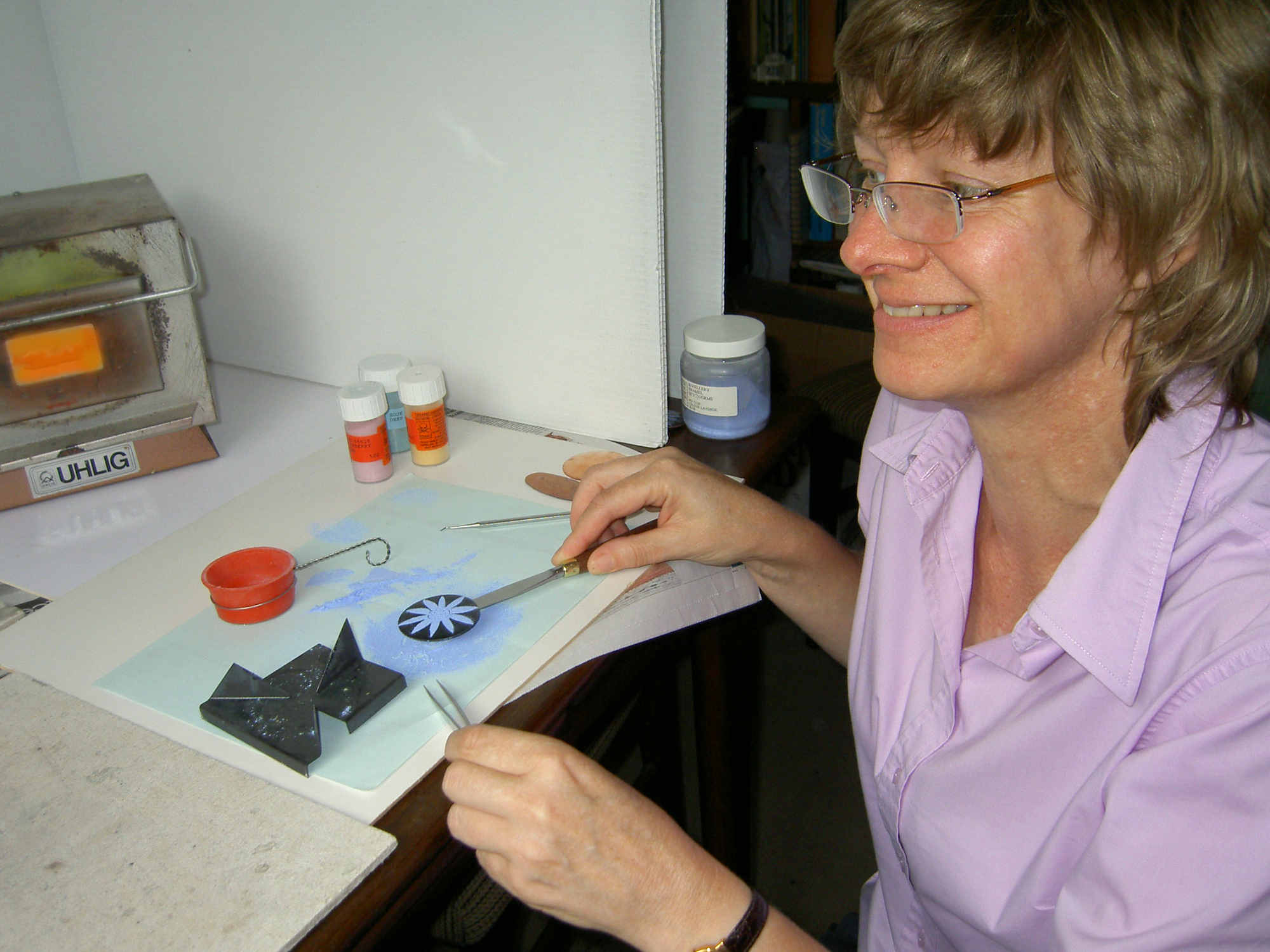Meet the Designer-Maker
Hi, I'm Christine, the designer-maker behind Original Kiln-fired Enamelled Jewellery. As a child I loved making things, even before I understood the idea of crafts. My first experience of enamelling was as a teenager and once I became fairly proficient I took my work to school fairs, etc, and also sold it to friends and family. Following school, I attended art college where I learnt traditional silversmithing techniques, but also had the freedom to be very creative using more unusual media. For some time I produced jewellery in these materials, however I was drawn back to my first love - enamelling. I have since expanded the range of my work to include items in mixed media, such as house numbers and other decorative plaques to apply to boxes, vases and the like.
How is the jewellery made?
Enamelling is the fusing of specially produced finely powdered glass to a metal base. A pure metal such as gold, silver or copper are usually required in order that the enamel adheres properly to the surface. Although specialist enamels for stainless steel are available.
When using copper, I dust a layer of the enamel powder with a small very fine sieve on to a shape (known as a blank). First the back is covered, this is called counter-enamel. Then the blank is fired in an enamelling kiln for a short time at around 800 degrees centigrade, on a flat stainless steel mesh support. The process is repeated to build up layers. Copper needs enamelling on the reverse as it becomes flexible when heated, so a finished piece could easily be damaged if not made rigid with counter-enamel. After cooling the work is turned over and a chosen enamel powder colour is sieved on to the front. The shape is then balanced on a different stainless steel support (called a stilt or trivet) and refired . A trivet is shaped to support the blank only by its very edges. A mesh cannot be used as the counter enamel would melt and the blank would stick to it. This is repeated, then a final decorative layer is applied. A design may be drawn in the powder or a stencil used and/or glass beads, threads or lumps and the like added, and the piece is refired. Once cooled the edges are filed to remove 'fire-scale' which is the blackening of the copper edges caused by heating. Finally the item can be assembled into a piece of jewellery.



